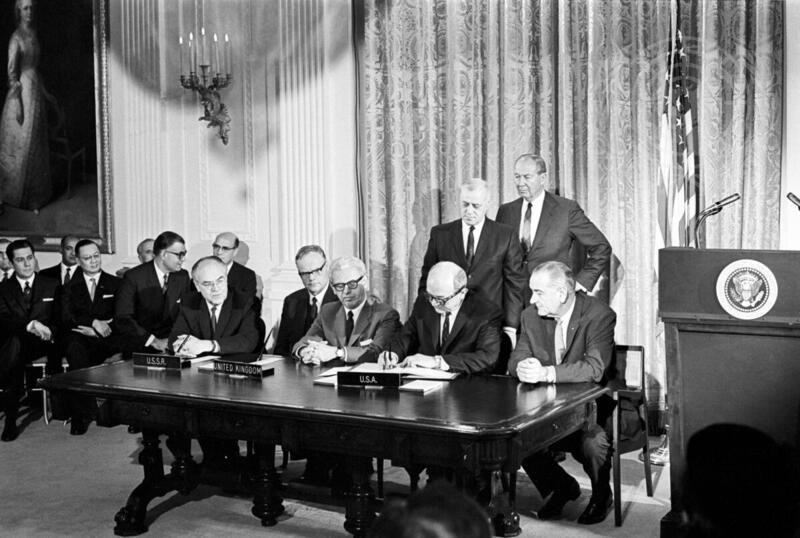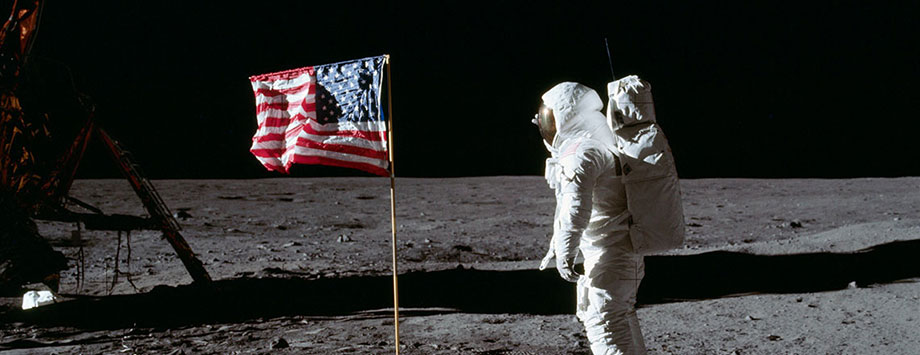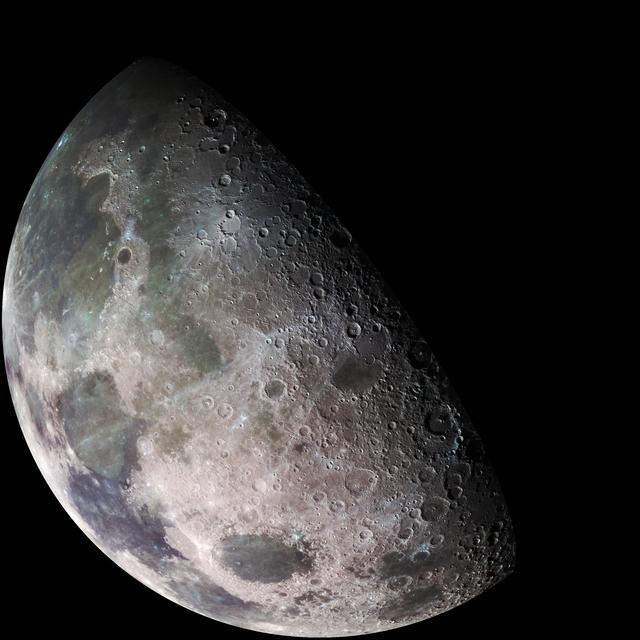The Outer Space Treaty is the foundation of international space law, shaping how nations explore and use outer space and celestial bodies. Signed during the Cold War, it was a crucial step in preventing conflicts beyond Earth and ensuring that space remains a domain for peaceful exploration.
But how does this treaty impact modern space activities, particularly the growing interest in commercial space activity and resource extraction?
The Origins and Purpose of the Outer Space Treaty

The Outer Space Treaty (formally known as the Treaty on Principles Governing the Activities of States in the Exploration and Use of Outer Space, including the Moon and Other Celestial Bodies) was adopted by the United Nations in 1967. It was first signed by the United States, the Soviet Union, and the United Kingdom and has since been ratified by 115 countries.
Its primary goal was to establish a framework for space exploration to ensure space remains free from military conflict, nuclear weapons, and national appropriation. The treaty emphasized that space should benefit all of humanity, setting key legal principles for future space activities.
Outer Space Treaty Principles Explained
Here are all of the principles of the treaty summarized and explained:
Article I: Space Belongs to Everyone
Outer space, including the Moon and other celestial bodies, is open for exploration and use by all nations, regardless of their scientific or economic development. No country can deny access to space, and all space activities must benefit humanity. Scientific research is encouraged, and nations should cooperate in space exploration.
Article II: No National Ownership of Space
No country can claim sovereignty over any part of outer space, including celestial bodies like the Moon or asteroids. This means that no government, organization, or private entity can declare ownership over planets, moons, or other celestial bodies.
Article III: Space Activities Must Follow International Law
All activities in space must comply with international law, including the United Nations Charter. Space exploration should promote global peace, security, and cooperation, ensuring that no activities create conflicts or harm international relations.
Article IV: No Weapons of Mass Destruction in Space
Countries are prohibited from placing nuclear weapons or any weapons of mass destruction in Earth’s orbit, on celestial bodies, or anywhere in outer space. The Moon and other celestial bodies can only be used for peaceful purposes, and military activities like testing weapons or setting up military bases are banned.
Article V: Astronauts Are “Envoys of Mankind”

Astronauts from any country are to be treated as representatives of all humanity. If an astronaut is in distress, other nations must provide assistance. If astronauts land in another country or in international waters due to an accident, they must be returned to their home country safely and as quickly as possible.
Article VI: Countries Are Responsible for National Space Activities
Countries are accountable for all space activities conducted by both government agencies and private companies. Even if a private company engages in space exploration, the country in which the company is based is legally responsible for ensuring that their activities follow the treaty.
Article VII: Liability for Damage Caused by Space Objects
If a country’s space object, such as a satellite or spacecraft, causes damage to another country’s property, people, or space assets, the launching country is fully liable for that damage. This applies whether the damage occurs in space, in the air, or on Earth.
Article VIII: Jurisdiction Over Space Objects
The country that registers a space object retains jurisdiction and control over it, no matter where it is in space. If a satellite or spacecraft is launched by a particular country, that country remains responsible for it. If the object is found by another nation, it must be returned to the launching state.
Article IX: Preventing Harmful Contamination in Space
Countries must avoid harmful contamination of celestial bodies and outer space. This includes taking precautions to prevent biological contamination from Earth to space and vice versa. If a nation plans an activity that could interfere with another country’s space activities, they must first hold international consultations.
Article X: Observing Space Missions
Countries are encouraged to allow other nations to observe their space missions to promote transparency and cooperation. If another country requests to observe a space mission, the involved nations should discuss and agree on the conditions.
Article XI: Sharing Space Exploration Information
Countries must inform the United Nations and the global scientific community about their space activities. This includes details about research, mission results, and discoveries, ensuring that knowledge gained from space exploration benefits all of humanity.
Article XII: Open Access to Space Installations
Any station, base, or equipment placed on celestial bodies must be open for inspection by other treaty members. However, the visiting party must provide advance notice and take precautions to avoid interfering with normal operations.
Article XIII: Space Treaties Apply to Everyone
The rules of the Outer Space Treaty apply to all space activities, whether carried out by a single country or by international organizations. If an international organization conducts a space mission, the treaty applies to both the organization and the member countries involved.
Article XIV: How the Treaty Becomes Law

The treaty was open for all countries to sign. Once a country signs and ratifies it, they are bound by its rules. The United States, Soviet Union (Russia), and the United Kingdom were the depositary governments responsible for managing treaty documentation.
Article XV: Amendments and Changes
Any country that is a party to the treaty can propose amendments. However, for an amendment to take effect, it must be accepted by a majority of participating countries. Any country that does not agree with the amendment is not required to follow it.
Article XVI: Countries Can Withdraw
A country can withdraw from the treaty if it gives one year’s written notice to the depositary governments. After that year, the country is no longer bound by the treaty’s rules.
Article XVII: Official Languages and Copies
The treaty is officially written in English, Russian, French, Spanish, and Chinese. Signed copies are stored in London, Moscow, and Washington, and certified copies are distributed to all signatory nations.
The Treaty and Space Resource Utilization
In recent years, the treaty’s prohibition on national appropriation has sparked debate regarding space mining activities. With private companies aiming to extract valuable resources from the Moon, asteroids, and beyond, legal uncertainties have emerged.
Can private entities mine resources? While the treaty bans national appropriation, it does not explicitly prohibit private sector exploitation of resources. Countries like the United States and Luxembourg have passed laws allowing companies to extract and own space resources, arguing that this does not violate the treaty.
However, there are some international disagreements. Some nations, such as Russia and China, oppose unilateral actions and advocate for international regulations on space resource use.
The Moon Agreement (1984)

The Moon Ageement from 1984 treaty attempted to clarify the Outer Space Treaty’s stance on resource exploitation, declaring that the Moon and its resources are the “common heritage of mankind.” It proposed that no single nation or private entity could claim ownership over any part of the Moon or its resources, emphasizing that any extraction or commercial use should be regulated through an international framework.
The agreement aimed to ensure that space resources would be equitably shared among all countries, rather than being monopolized by wealthier spacefaring nations. However, it has not been widely adopted, as no major space-faring nations, including the United States, Russia, and China, have signed or ratified it. Many countries oppose its restrictions on private enterprise, arguing that it discourages investment in lunar exploration and resource extraction.
With the space race accelerating once again, a new effort has been made to address the key question of resource utilization: the Artemis Accords. This international agreement, led by the USA and signed by multiple nations, aims to establish a framework for the peaceful and transparent use of space resources. The Accords promote cooperation, responsible exploration, and the recognition of resource extraction rights under existing space treaties.
Why the Outer Space Treaty Still Matters
The Outer Space Treaty of 1967 remains the most important legal document governing space activities. It established key principles such as peaceful exploration, freedom of access, and the ban on weapons of mass destruction in space. Unlike the Moon Agreement or the Artemis Accords, this treaty is the only space law document signed by all major spacefaring nations, making it a fundamental pillar of international space law.
However, as private companies enter the space industry and commercial space activities increase, some areas, such as property rights over space resources, are still unclear and require updated agreements in the future.